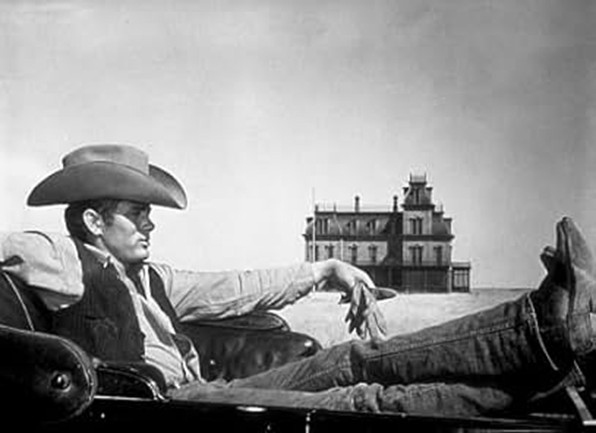Our own views and client news
Issue No. 6, 2025
In this issue of Crosswinds: No one tells a Texas story better than a Texan. And it’s about time we kept the camera – and the culture – close to home.

Thomas Graham
Keep the Hat Level — And the Story Honest
Why Texas Needs to Film Texas
Texas is back on the map – cinematically, that is – thanks to the Texas Legislature’s passage of new film incentives that seek to attract and boost the cinematography story telling of our state.
There once was a time when Texas films were filmed in Texas and made a big impact on the communities and culture they touched.
A brief list includes Giant, Hud, The Last Picture Show, The Alamo (John Wayne’s version), Dazed and Confused and even Friday Night Lights. On my way home from the office to my ranch east of Austin, I pass the grocery store of What’s Eating Gilbert Grape fame.
But the last few years, something’s been eating film fans in Texas. More often than not, films about Texas were filmed in – New Mexico! Film incentives both foreign and domestic became a competitive differentiator and more and more often films about Texas are filmed elsewhere.

The 1956 film “Giant” was mostly filmed in Marfa, Texas. The Ryan Ranch, located west of Marfa, was the primary location for ranch scenes. Source: Floyd McCarty – © MPTV
The wild success of Yellowstone, not a Texas series but with certain Texas roots, is helping bring Texas-style films back to the fore. Its 1883 origin story and sibling series Landman have spotlighted Texas culture in a way that’s both compelling and, at times, frustrating. While we Texans welcome the attention, some of us wish it came with a bit more authenticity – and maybe a quick lesson on how to wear a hat.
That’s part of why the Texas Legislature is expanding our state’s film incentive program – not just to bring more jobs and economic development, but to ensure the stories told about Texas are actually filmed here, by people who know the difference between a roughneck and a rodeo clown, and who understand that “yes ma’am” isn’t a punchline, it’s a way of life.
The list of iconic “Texas” films that weren’t shot in Texas is longer than the Pecos River: Hell or High Water (New Mexico), No Country for Old Men (also New Mexico), and plenty more. Great stories — but they weren’t told on our soil, and it shows. Texas has terrain, talent, and tone that can’t be faked on a soundstage a thousand miles away.
And the values? They matter, too. We say “sir” and “ma’am.” Our heroes are flawed, sure – but they’re not nihilists. They work hard, love their families, and try to do right by their neighbor. That’s a Texas story.
Take Landman. While the show captures some of the swagger of the oil patch, many Texans have shaken their heads at how the characters portray our communities. Not every teenage girl in West Texas is sex-crazed, not every divorcee drives a Bentley and every roughneck knows how to use a pipe wrench.
In a recent Texas legislative hearing, one senator called out the show’s producer for his characters’ excessive use of the “f-word” saying, “It seems like Hollywood is a big influencer, right, wrong or indifferent, for the last few decades. And when I sit at a Tech football game and the 19-something behind me can only say the F word, it’s just really offensive.”
But Yellowstone and Landman both get the hats right.
The new series Ransom Canyon on Netflix? Not so much. It was definitely filmed in New Mexico, and more than the scenery gives it away. The overuse of turquoise is a starter but no character on the series wears his cowboy hat on right.
Every time I see an actor with their hat resting atop a coiffed head like they just wandered in from a Coachella fashion shoot, I want to reach through the screen and give it a nudge forward. Just a touch. Level and straight, not too far back or tipped forward like a fedora. But of course – any Texan knows – you don’t touch another man’s hat.
If Ransom had been filmed in Texas instead of New Mexico, someone on set could’ve quietly pulled those California actors aside and shown them how it’s done. Or they could’ve just called Neal McDonough – he wears it right and tight in The Last Rodeo, a film set in Texas (though, to be fair, mostly shot in Oklahoma. Also, to be fair, Ransom Canyon gets it right by the end of the series and in all their publicity promo shots, which means someone stepped up.)
Authenticity matters. Not just in hat etiquette, but in the way we tell stories. And if we want Texas stories told with integrity, we ought to film them here – with local crews, local scenery, and local spirit.
Maybe the Legislature doesn’t need to write a “hat law,” but if they’re looking for a reason to expand Texas film incentives, let it be this: No one tells a Texas story better than a Texan. And it’s about time we kept the camera – and the culture – close to home.
Thomas Graham is a Texas storyteller, author of Branding Texas and serves as CEO of Crosswind Media & Public Relations, a national corporate affairs consultancy with offices in Austin, Texas and Washington, D.C
We’d love to hear from you.
Please email [email protected]

